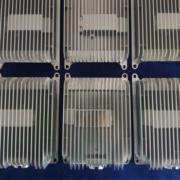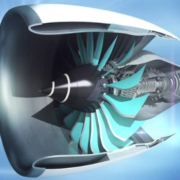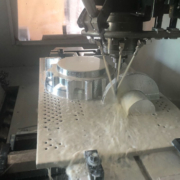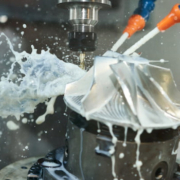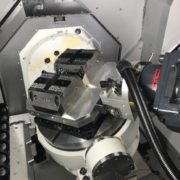How Much Do You Know about Brass CNC Machining?
Without question, brass is one of the most widely utilized metals globally. Indeed, the likelihood that you will contact the metal alloy before leaving your residence is absurdly high. You name it: doorknobs, musical instruments, furniture, faucets, and bathroom fittings. Even more intriguing is that brass material has grown in popularity beyond home usage and has become a standard in various sectors, including fast prototyping.
In this post, we will look at many of these brass features and its application in CNC machining. Additionally, you will learn about the many sorts and grades of brass. There is yet more. Additionally, we will discuss some relevant considerations for selecting a brass material for rapid prototyping. Let’s get started!
Properties of Brass
Brass presently contains several different metals in trace amounts to enhance its qualities. Arsenic, lead, aluminum, and silicon are just a few of these metals.The advantage of brass is that the proportions of its two principal metal elements – copper and zinc – may be adjusted depending on the application. It implies, however, that the qualities of brass are not universal and vary according to the brass composition.Several brass features support its extensive usage in rapid prototyping and bespoke Brass CNC machining parts. Consider these qualities briefly.
Malleability
Brass is an extremely malleable metal alloy. And it is more malleable than copper and zinc. This malleability is a significant advantage in the rapid prototyping and Brass CNC machined parts industries since producers may readily bend and mold the alloy. This rationale also holds when working with brass 3D filament.
Corrosion-resistant
Corrosion resistance is one of the most desired materials used in fast prototyping and component manufacture. It also makes perfect sense since corrosion-resistant materials may preserve their outward integrity and appearance for an extended period. Brass is very corrosion resistant. It is mostly due to brass’s iron deficiency. According to reports, brass is even resistant to galvanic corrosion caused by seawater, far more corrosive than freshwater. This characteristic is very advantageous when working with brass 3D filament.
Aesthetically pleasing
Brass is distinguished by its brilliant gold appearance. The brass composition has a significant effect on the final color of the brass substance. A higher copper concentration results in a more reddish tint, while a higher zinc level results in a more silver tone. The emphasis on the exterior qualities of materials is at an all-time high in fast prototyping. Manufacturers today place a higher premium on aesthetics, and nothing beats the dazzling golden look of brass material.
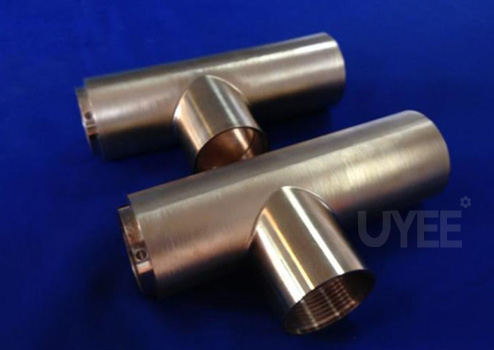
Simple machining
Another advantageous property of brass for rapid prototyping is the simplicity of machining. It offers a long tool life, high feed rates, high elasticity, and flexibility, all of which are desired characteristics for any machinist, particularly when doing operations such as brass 3D printing.
Excessive tensile strength
Brass material has high tensile strength despite its ease of machining and formability. Experts even compare it to mild steel in terms of tensile strength. Brass components will be solid and durable, extending their total durability.
Electrical conductivity is exceptional
Brass is a very conductive metal, owing to the presence of copper. If you didn’t know, copper is the second most conductive metal after gold. Brass’s excellent electrical conductivity is complemented by its superior thermal characteristics. It finally implies that brass is advantageous for components that need excellent electrical conductivity at elevated temperatures.
Choosing a Brass Material for the Best Application in CNC Machining
Brass is a versatile metal alloy often used in sheet metal fabrication, rapid prototyping, and CNC machining. Many people are unaware of this alloy because it is a catch-all word for various metal alloys. What are we referring to? Numerous metal alloys include copper and zinc in various amounts.
These compositional differences also result in differences in attributes and, eventually, utilization. As a result, while rapid prototyping or manufacturing unique components, one cannot choose any brass kind or grade. The below recommendations will assist you in selecting the appropriate brass material for your rapid prototype, rapid tooling, and bespoke CNC Brass parts projects.
Consider the physical look
Consider the look of brass and its effect on the finished product before choosing a brass material. Brass has a brilliant golden hue in general. However, this is very variable depending on the copper and zinc content. Try using a brass material with a greater copper percentage if you want a rosier look for your finished product. If you like a more silver appearance, seek brass materials with a larger percentage of zinc.
Intended strength of the finished product
Brass alloys have varying tensile strengths. While materials with very high tensile strengths are stronger and more durable, they may be difficult to machine. You need to decide how robust your final product is and strike a balance.
Corrosion resistance evaluation
Almost every metal, except brass, is susceptible to corrosion to some degree. Brass products are generally iron-free, which makes them very resistant to corrosion. Because brass goods are often iron-free, they are very corrosion resistant. Certain brass grades and varieties are more corrosion resistant than others. For example, brass with strong corrosion-resistant qualities is required to fabricate ocean vessel components. It also applies to materials that are capable of retaining seawater.
Consider machinability
Brass, in general, has excellent machinability qualities. Thus, when a brass material has low machinability, it is often compared to other brass materials. After establishing that, some CNC machining procedures may need very simple machining. Yes, even if it means sacrificing strength.
Conclusion
Among the most extensively used metal alloys is brass, composed mostly of copper and zinc. As you may have seen from the article, there are several elements to consider when selecting a brass material that will fulfill your CNC machined Brass parts requirements. Even modest compositional alterations in the brass may result in major property changes. Certain procedures, such as brass 3D printing, cannot be left unclear. It emphasizes the critical need to be aware of all pertinent elements before working with brass alloy.

